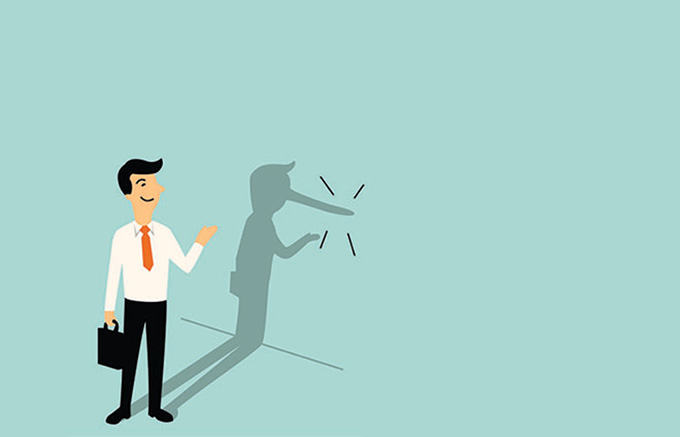
You don’t need to be in the middle of an election campaign to worry about your ability to spot a lie. Psychology research suggests that people lie at least once a day.
A 2006 study of 206 documents found that we are just a little better than chance at guessing whether we are dealing with a lie or not, at exactly 54%.
Some lies are told to protect others: what we call a white lie. I wouldn’t mind if someone said to me, “You’re a brilliant psychologist.” However, most lies tend to benefit the person telling them.
We learn to lie very early, usually between two and three years old . Crafting a successful lie takes a little more time and requires a more developed ability to understand the mindset of others.
You also need a good working memory, in order to be able to remember your lie. The brightest children seem to be the ones who lie most often and most selfishly. As adults, we seem to be well established.
There are no telltale signs of lying per se, but there may be indicators of negative emotions associated with lying (anxiety, guilt, shame, sadness, fear of being caught) even when the liar tries to to conceal .
These emotions are sometimes manifested by micro-expressions, those facial expressions that last for a fraction of a second, or by concealed expressions where the liar covers the emotion with a mask, usually a fake smile.
You can recognize a fake smile by the fact that it does not involve the muscles around the eyes and leaves the face quickly. Real smiles fade more slowly .
But the problem with nonverbal indicators of deception is that most of us would need to watch the behavior again in slow motion to spot it.
Face the truth
What about avoiding eye contact, generally considered an indicator of deception? My mother always told me that she knew when I was lying because I couldn’t look her in the eyes. She came closer and asked me what I had done the day before.
Yet eye contact is not a useful indicator of deception. Eye contact is modified by our cognitive activity even when we tell the truth. For example, by planning our speech or using our memory.
Plus, we all know that’s what people are trying to spot. And liars know how to control this factor. Good liars can maintain eye contact when they lie, planning their lie in advance and building their lies on fragments of truth and real situations.
Eye contact is also influenced by interpersonal distance . It’s difficult to maintain eye contact when someone is sitting close to you and staring at you (like my mother).
Certain behaviors signal the degree of intimacy between two people, such as distance, eye contact, and topic of conversation. If the interpersonal distance changes, we seek to balance it. So when my mother approached for questioning, I looked away and she got the evidence she was looking for.
This is a type of confirmation bias . It’s not just about looking for evidence to confirm your hypothesis, but also about unconsciously influencing the behavior you’re looking for.
This doesn’t just apply to my mother. A 1978 study suggested that police officers, during interrogations, approach suspects they believe are guilty. If the suspect looks away…he is more likely to be guilty! Observers do not notice the change in distance.
But confirmation bias isn’t just about the distance between people. We instantly and unconsciously judge a person’s trustworthiness by their face, very quickly in daily life (about a tenth of a second). Once we decide that a person seems trustworthy, we will unconsciously look for fewer clues of deception.
Lie detection is full of biases and good liars know how to exploit them. They know what we are looking for and it is precisely these elements that they control. Good eye contact, a smile to hide your true emotions, a well-prepared speech with little hesitation. They can also convince themselves of the “truth” of their lie. Self-deception reduces any emotional response.
For my new book Lies, Lying and Liars: A Psychological Analysis , I studied many expert liars and how they use our intuition against us. For example, to judge a lie, we need a baseline behavior, which allows us to detect any deviation.
Lying experts seek to disrupt this process. One of my informants (who had something to hide) told me that when he was arrested by the police, he pretended to be very angry and a little unstable to destabilize them.
And then there is personality. There’s no point looking for micro-expressions of guilt, shame, sadness, or fear if that’s not what the liars feel inside. Some people like to lie. It’s exciting, they don’t care about the consequences. In this case, any micro-expression will be positive.
Author Bio: Geoff Beattie is Professor of Psychology at Edge Hill University
